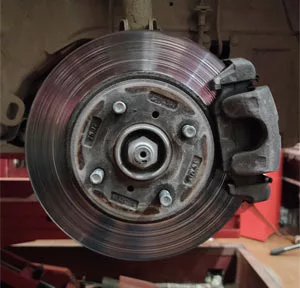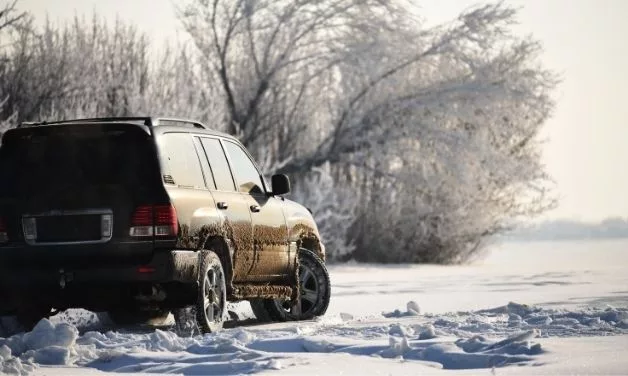Winter Off-Roading ||When the snow falls and the world turns into a winter wonderland, adventure-seekers know that it’s the perfect time to take off-roading to a whole new level. But before you hit those icy trails, it’s crucial to winterize your vehicle. Don’t worry, even if you’re new to this, we’ve got you covered with some easy-to-follow tips to make your off-roading adventures safe and thrilling.
1. Choose the Right Tires for Winter Terrain

Your vehicle’s tires are like its shoes, and in winter, they need the right ones. Let’s take a look at the ins and outs of what to look for in winter tires:
- Tire Type:
- Snow Tires (Winter Tires): Specifically designed for winter conditions, including snow and ice. They have a specific tread pattern and rubber compound for enhanced traction.
- Tire Size:
- Ensure that you select the correct tire size for your vehicle. The size is usually specified in the vehicle owner’s manual or on the sidewall of your current tires.
- Tread Pattern:
- Winter tires have unique tread patterns with more sipes (small channels) and biting edges. This design helps improve grip on snow and ice.
- Tire Traction and Grip:
- Look for tires with good traction on snowy and icy surfaces. Check for features like deep treads and advanced rubber compounds that stay pliable in colder temperatures.
- Performance Ratings:
- Pay attention to performance ratings, including the tire’s snow traction grade. Higher ratings indicate better performance in winter conditions.
- Studless vs. Studded Tires:
- Studless Tires: These use special tread compounds for traction on ice and snow. They are a popular choice where studded tires are restricted.
- Studded Tires: Equipped with metal studs for additional traction on icy roads. However, they may be restricted in some areas due to road damage concerns.
- Branding and Reviews:
- Consider well-known brands with positive reviews. Researching customer experiences can provide valuable insights into a tire’s performance. One of the best places to do that online is www.tirerack.com.
- Speed Rating:
- Ensure that the winter tires you choose have an appropriate speed rating for your vehicle. This information is also available in the vehicle owner’s manual.
- Tire Pressure Monitoring System (TPMS) Compatibility:
- Check if the winter tires are compatible with your vehicle’s TPMS, as some models may require special sensors.
- Budget:
- Set a budget for your winter tires. While it’s important to invest in quality tires, there are options available at various price points.
- Installation and Maintenance:
- Consider where and how you will have the tires installed. Some retailers offer packages that include installation and seasonal tire changes.
Remember to consult with experts at tire shops or refer to your vehicle’s manual for specific recommendations tailored to your car model and driving conditions. Want help in choosing winter tires? Check out Firestone’s What to look for when buying winter tires.
2. Keep Your Brakes in Top Shape

Your brakes are your vehicle’s lifeline, especially during off-roading escapades. Have a professional check your brakes for wear and tear, and replace them if necessary. Properly functioning brakes are essential for navigating slippery slopes.
3. Equip Your Vehicle with Snow Chains
Snow chains are like magic for off-roaders in winter. They provide extra grip when you’re tackling snowy or icy terrain. Learn how to install them properly and keep them in your vehicle for when you need that added traction.
4. Check Your Vehicle’s Fluids
Cold weather can affect your vehicle’s fluids. Make sure you have the right antifreeze and that your oil is suitable for colder temperatures. Additionally, check your transmission and differential fluids to ensure they’re at the right levels.
5. Keep an Emergency Kit on Hand
When off-roading in winter, it’s always better to be safe than sorry. Put together an emergency kit that includes items like a first aid kit, flashlight, blankets, and extra warm clothing. If you get stuck, you’ll be grateful for these essentials.

6. Upgrade Your Lighting
Winter days are shorter, and off-roading adventures can stretch into the evening. Consider upgrading your vehicle’s lighting with brighter, more powerful lights or light bars. This will improve visibility and safety.
7. Protect Your Vehicle’s Exterior
Winter terrain can be harsh on your vehicle’s exterior. Consider applying a protective coating to your vehicle to shield it from road salt, snow, and ice. This can help prevent rust and damage.
8. Practice Safe Off-Roading Techniques
Off-roading in winter requires a different set of skills. Take the time to learn and practice safe techniques for navigating icy and snowy trails. Go with experienced off-roaders if you’re new to the game.
Conclusion Winter off-roading is an exhilarating experience that can create unforgettable memories. By following these beginner-friendly tips and ensuring your vehicle is properly winterized, you’ll be ready to embrace the chill and conquer those snowy trails safely. So, gear up, get out there, and let your winter off-roading adventures begin! Read More>>
Leave a Reply